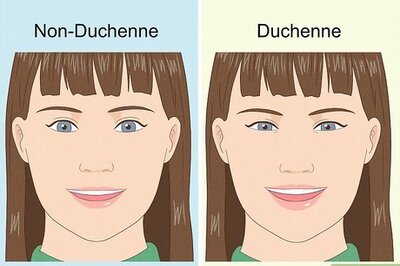
views
Lyme disease has been in the spotlight more recently, thanks to some high-profile celebrities such as model Bella Hadid discussing their experience with it and drawing attention to this little-known, but preventable illness.
We bring you more information on the condition to help you be aware of how to prevent and treat it as we head into the warmer months.
What is Lyme disease?
Lyme disease is caused by the bacterium Borrelia burgdorferi and is passed to humans through the bites of infected ticks.
What are the symptoms?
Typical symptoms include fever, headache, fatigue, and the most frequent and characteristic symptom, a skin rash called erythema migrans.
The rash is easily recognizable with a circular, bull's-eye pattern, at least three to five centimeters in diameter and a white area in the middle. It can take days or weeks to appear, and although it is not painful nor itchy, it is the first stage of Lyme disease.
If left untreated, the infection can become worse and spread to joints, the heart, and the nervous system, however most cases of Lyme disease can be treated successfully with a few weeks of antibiotics.
How can it be prevented?
Preventing tick bites can prevent Lyme disease, as well as other tick-transmitted diseases.
To avoid bites keep arms and legs covered with long clothing when out in the countryside, use insect repellent and reduce time spent in areas where ticks live, in particular long grass, humid undergrowth, prairies, meadows and fields.
Once home check your body for ticks, in particular areas such as armpits, folds of skin, the scalp and the navel.
How can I remove a tick if I find it?
The tick needs to be removed as soon as possible to avoid infection.
Use a pair of fine-tipped tweezers or a tick-removal tool from a pharmacy to grasp the tick as close to the skin as possible.
Then, pull it upwards with steady, even pressure and without twisting it, which can cause parts to break off and remain in the skin. If this happens, remove with tweezers, or if you are having difficulty, leave it and let the skin heal.
After removing the tick, clean the bite area with rubbing alcohol, an iodine scrub, or soap and water.
What do I do if I think I've been infected?
If you show any symptoms of Lyme disease and have had a tick bite, live in an area with Lyme disease, or have recently traveled to an area with Lyme disease, seek medical help for a healthcare professional as soon as possible.
Catching Lyme Disease quickly means that patients can be treated with the appropriate antibiotics in the early stages, which usually means a quick and full recovery.
For those concerned about Lyme Disease, more information can be found online from the World Health Organization and the Centers for Disease Control and Prevention.


















Comments
0 comment